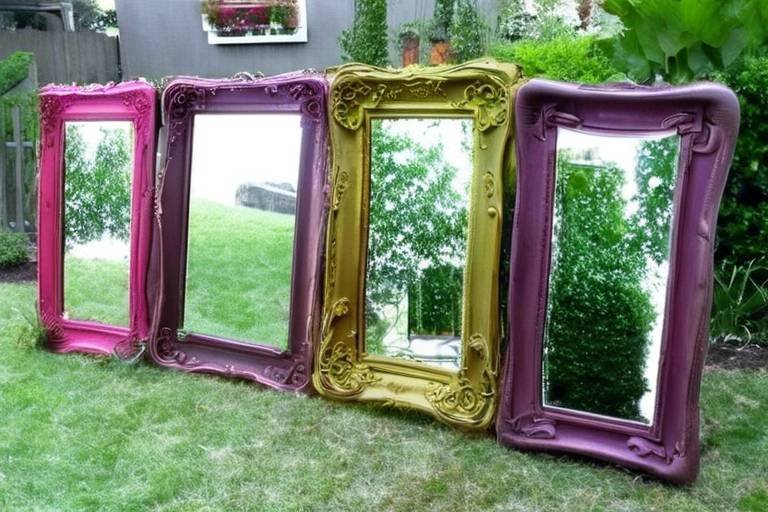Repurposing Old Furniture: A Comprehensive Guide
Are you tired of your old furniture just sitting there, taking up space and collecting dust? Well, it’s time to unleash your creativity and give those tired pieces a second chance! Repurposing old furniture is not just an environmentally friendly choice; it’s also a fantastic way to express your personal style and creativity. In this comprehensive guide, we’ll explore various methods to breathe new life into your furniture, turning it into something functional and beautiful. Whether you’re a DIY novice or a seasoned pro, there’s something here for everyone!
So, what exactly is repurposing? It’s the art of taking old furniture and transforming it into something new and functional. This could mean anything from turning an old dresser into a chic TV stand, to converting a wooden pallet into a rustic coffee table. The beauty of repurposing lies in its versatility and the endless possibilities it offers. Not only does repurposing help reduce waste and promote sustainability, but it also encourages a sense of creativity and personal expression in your home decor. By giving your old furniture a new lease on life, you’re not just saving money; you’re also making a statement about your values and style.
Before diving headfirst into your repurposing project, it’s crucial to assess the condition and potential of your old furniture. Take a moment to evaluate what can be salvaged and what might need a little extra TLC. Start by checking the structural integrity of your piece—this means looking for any damages or weaknesses that might affect its functionality. If the frame is sturdy, you’re off to a great start!
When assessing your furniture, pay close attention to its stability and durability. Look for signs of damage such as:
- Loose joints
- Cracks in the wood
- Wobbly legs
If you notice any of these issues, don’t fret! Many structural problems can be repaired with a bit of effort. Just ensure that your repurposed piece will be safe and functional before you start the transformation process.
Recognizing signs of wear can help determine the best approach for your project. Common issues include scratches, dents, and faded finishes. These imperfections can often be addressed with sanding, painting, or refinishing. By embracing these flaws, you can create a piece that tells a story and adds character to your home.
Next, consider the design and style of your furniture. Ask yourself: What new uses can I envision for this piece? The aesthetic potential of your furniture can inspire countless creative ideas. Whether you want to paint it a vibrant color, add new hardware, or completely change its function, the possibilities are endless!
Once you've assessed your furniture, it’s time to explore the various techniques available for repurposing. Popular methods include upcycling, refinishing, and reupholstering. Each technique offers a unique way to transform your furniture into something fresh and exciting. For instance, if you have an old chair that’s seen better days, consider reupholstering it with a fun fabric to give it a modern twist.
Gathering the right tools and materials is crucial for successful repurposing. Here’s a quick rundown of what you might need:
| Tools | Materials |
|---|---|
| Screwdrivers | Paint |
| Sanders | Wood stain |
| Paint brushes | Fabric for reupholstering |
Finding these items doesn’t have to break the bank! Check local hardware stores, thrift shops, or even borrow from friends. The right tools can make all the difference in your repurposing journey.
Now that you’re equipped with knowledge and tools, let’s dive into some inspiring ideas for repurposing old furniture! From turning a dresser into a stylish TV stand to transforming a ladder into a unique bookshelf, your imagination is the only limit. Each room in your home offers unique opportunities to showcase your creativity.
Consider the specific needs of each room when brainstorming ideas. For example:
- In the living room, an old trunk can become a coffee table.
- In the bedroom, a nightstand can be repurposed as a small desk.
- In the kitchen, an old table can be transformed into a stylish island.
By thinking outside the box, you can find new uses for almost anything!
Don’t forget to consider seasonal themes when repurposing furniture. Imagine creating festive decor for the holidays or themed pieces that can be enjoyed year-round. Adding seasonal touches to your repurposed furniture can keep your home feeling fresh and inviting.
To achieve a successful repurposed piece, planning and patience are key. Start by outlining your project steps and setting a timeline. This will help you stay organized and motivated throughout the process. Remember, Rome wasn’t built in a day, and neither will your masterpiece!
Safety should always come first when working on furniture projects. Use protective gear such as gloves and masks, and maintain a clean workspace to prevent accidents. Following safety guidelines will ensure a smooth and enjoyable repurposing experience.
Once your repurposed furniture is complete, it’s time for the finishing touches! Styling your piece can enhance its overall appeal and make it a standout feature in your home. Consider arranging decor, choosing complementary colors, and creating a cohesive look that highlights your creativity.
Finally, don’t forget to share your repurposing journey! Showcasing your projects on social media can inspire others and connect you with a community of fellow DIY enthusiasts. Who knows? Your work might spark someone else’s creativity!
Q: What types of furniture are best for repurposing?
A: Almost any piece can be repurposed! Look for items that have good structural integrity and can be easily transformed, such as dressers, chairs, and tables.
Q: Do I need special skills to repurpose furniture?
A: Not at all! Basic skills like sanding and painting can go a long way. Plus, there are plenty of tutorials available online to guide you through more complex projects.
Q: How do I choose the right paint or finish?
A: Consider the look you want to achieve and the material of your furniture. Test samples to see how they look before committing to a color or finish.
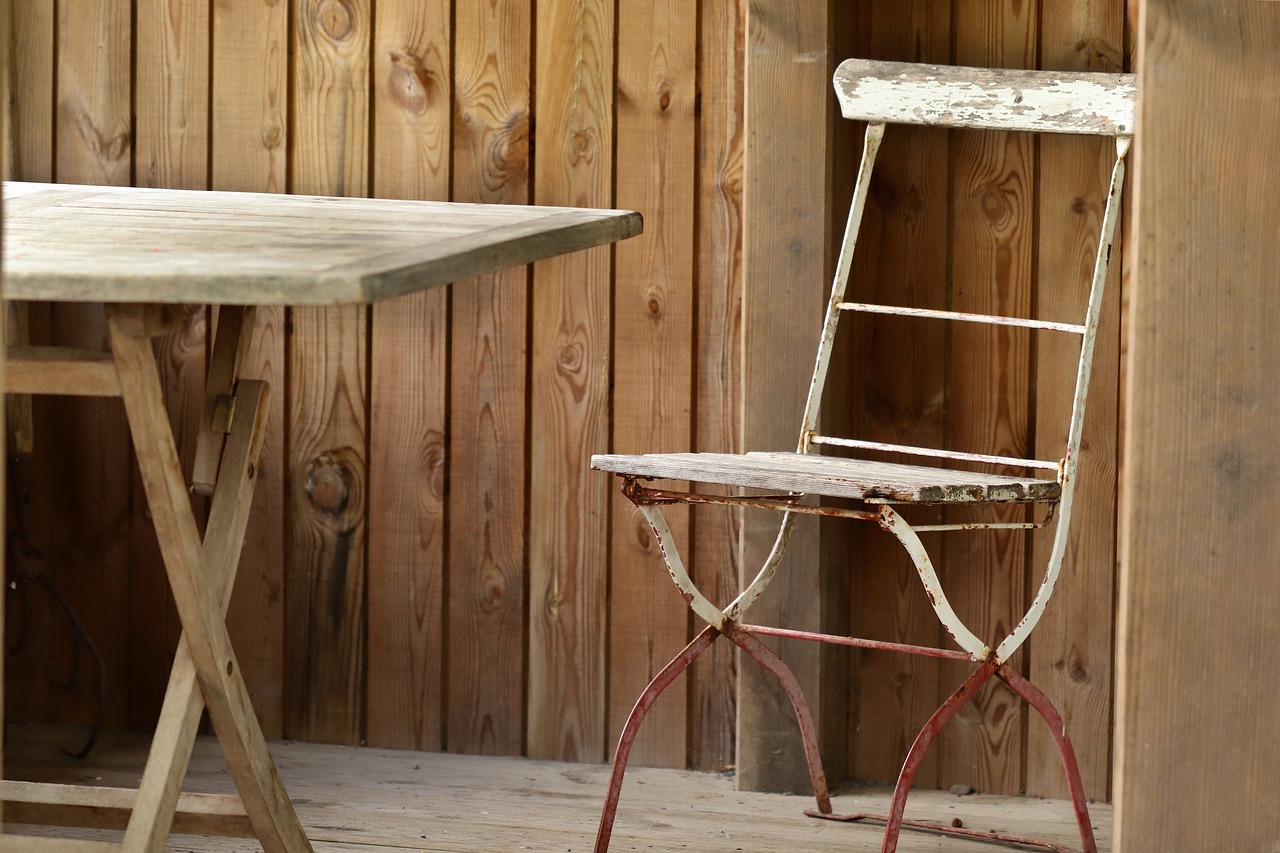
Understanding Repurposing
Repurposing is more than just a trend; it’s a creative revolution that transforms old furniture into something fresh and functional. Imagine taking a worn-out chair and turning it into a stylish plant stand or converting a vintage dresser into a chic TV console. This process not only breathes new life into tired pieces but also allows you to express your personal style while promoting sustainability. By giving old furniture a new purpose, you contribute to a greener planet by reducing waste and minimizing the demand for new resources.
The benefits of repurposing are manifold. Not only does it save money, but it also provides a unique opportunity to showcase your creativity. Each piece tells a story, and by repurposing, you can ensure that story continues in a new form. Furthermore, engaging in repurposing projects can be incredibly fulfilling. It’s like a treasure hunt in your own home, where you discover potential in items you once overlooked. Plus, it’s a fantastic way to spend time with family or friends, turning a simple task into a fun, collaborative experience.
Repurposing furniture also encourages you to think outside the box. Instead of viewing furniture as a static object, you start to see it as a canvas for creativity. This shift in perspective can lead to innovative designs that reflect your personality and taste. For instance, an old wooden ladder can become a rustic bookshelf, while mismatched chairs can be painted in vibrant colors and used as a unique dining set. The possibilities are endless, and that’s what makes repurposing so exciting!
Moreover, embracing the art of repurposing aligns perfectly with a sustainable lifestyle. In a world where consumerism often leads to excessive waste, repurposing is a powerful act of resistance. It’s about valuing what you have and finding new ways to use it rather than discarding it. This practice not only conserves resources but also inspires others to think creatively about their possessions. By sharing your repurposing projects, you can motivate your friends and family to join in on the fun, creating a ripple effect of sustainability and creativity.
In conclusion, understanding repurposing is about recognizing the potential in what we already own. It’s a blend of creativity, sustainability, and personal expression that can transform your home and enrich your life. So, the next time you look at that old piece of furniture gathering dust, ask yourself: How can I give it a new life? Your answer might just surprise you!

Assessing Your Furniture
Before diving headfirst into the exciting world of repurposing, it's crucial to take a moment to assess the furniture you have on hand. This step is like laying the foundation for a house; without it, your entire project could crumble. Start by examining the overall condition of your piece. Is it sturdy enough to withstand a new life, or is it on its last legs? Look for signs of wear and tear, which can help you determine what can be salvaged and what might need a little extra TLC. Remember, the goal here is to breathe new life into your furniture while ensuring it remains functional and safe.
When assessing your furniture, consider the following aspects:
- Structural Integrity: Check for any damages or weaknesses in the furniture's structure. Is it wobbling or does it have loose joints? Assessing stability is paramount to ensure your repurposed piece will serve its new purpose safely.
- Aesthetic Potential: Take a good look at the design and style of your furniture. Does it have a classic charm or a contemporary vibe? Envisioning new uses that enhance your home decor while reflecting your personal style can make a significant difference.
- Repair Needs: Identify any repairs that may be necessary before you can start repurposing. Are there scratches, dents, or broken parts that need fixing? Knowing what you’re working with will help you plan your project effectively.
Let's break down these key areas further:
To ensure your repurposed furniture is safe and functional, it's essential to check its structural integrity. This means looking for any signs of damage that could affect its stability. For example, if a chair has a wobbly leg, it might not be the best candidate for a new life as a decorative piece. Instead, it might be better suited for a project that requires less structural support. Look for cracks, broken joints, or any signs that the piece might not hold up under pressure.
Recognizing signs of wear can help determine the best repurposing approach. Common issues to look for include:
- Scratches: These can often be sanded down or covered with paint.
- Dents: Depending on their location, they can sometimes be filled in or disguised with decorative elements.
- Loose Joints: These may require some glue or screws to secure them before you start your project.
Addressing these issues before you begin will ensure a smoother repurposing process and result in a more polished final product.
Once you've assessed the structural integrity and identified any repair needs, it's time to consider the aesthetic potential of your furniture. This is where your creativity can really shine! Think about how the piece can fit into your existing decor or how it can stand out as a statement piece. For instance, an old wooden dresser could be transformed into a chic TV stand with a little sanding and a fresh coat of paint. The possibilities are endless, and the only limit is your imagination!
In summary, assessing your furniture is a vital step in the repurposing process. By carefully evaluating the structural integrity, identifying signs of wear and tear, and considering the aesthetic potential, you can set yourself up for success. Remember, every piece of furniture has a story, and with a little creativity, you can help it write a new chapter in your home!
Q: How do I know if my furniture is worth repurposing?
A: If the piece is structurally sound and has aesthetic potential, it's likely worth repurposing. Look for unique features or good quality materials that can be enhanced.
Q: What tools do I need for assessing my furniture?
A: Basic tools like a screwdriver, measuring tape, and a level can help you check for stability and measure dimensions for your new project.
Q: Can I repurpose furniture that is heavily damaged?
A: It depends on the extent of the damage. Minor repairs can often be made, but if the piece is beyond repair, it might be best to recycle it instead.
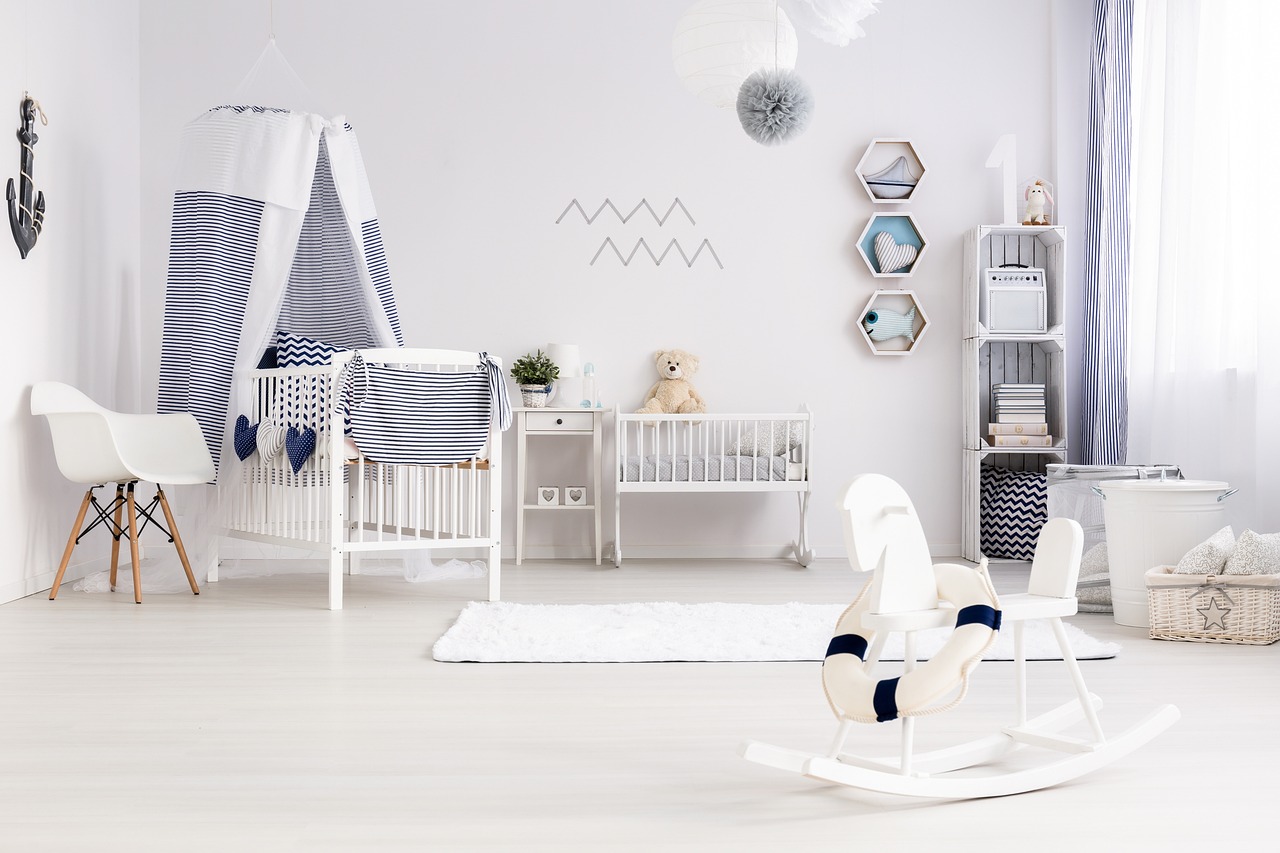
Identifying Structural Integrity
When it comes to repurposing old furniture, one of the most crucial steps is identifying its structural integrity. After all, you want to ensure that the piece you are transforming is not only visually appealing but also safe and functional. Begin by inspecting the furniture closely. Look for any visible signs of damage, such as cracks, loose joints, or wobbling legs. These issues can significantly affect the stability of your newly repurposed item.
To help you assess the structural integrity effectively, consider the following key factors:
- Stability: Gently shake the furniture to see if it wobbles. If it does, this could indicate loose joints or a weakened frame that may need repair before you proceed with any repurposing.
- Material Quality: Check the material used in the construction of the furniture. Solid wood pieces tend to be more durable and easier to work with compared to particle board or veneer, which can be prone to damage.
- Joint Condition: Inspect the joints where different parts of the furniture connect. Look for any signs of separation or wear, as these areas are often the most vulnerable.
If you find that the furniture has minor issues, don’t fret! Many problems can be fixed with a bit of carpentry knowledge and the right tools. For instance, reinforcing loose joints with wood glue or screws can restore stability, while sanding down rough edges can improve the overall finish. However, if the structural damage is extensive, it might be wise to reconsider your project or seek professional help.
Remember, a sturdy foundation is essential for any repurposed piece. Not only does it ensure safety, but it also extends the life of your creation, allowing it to be enjoyed for years to come. So take your time during this assessment phase; it’s a vital step in the journey of transforming your old furniture into something new and fabulous!
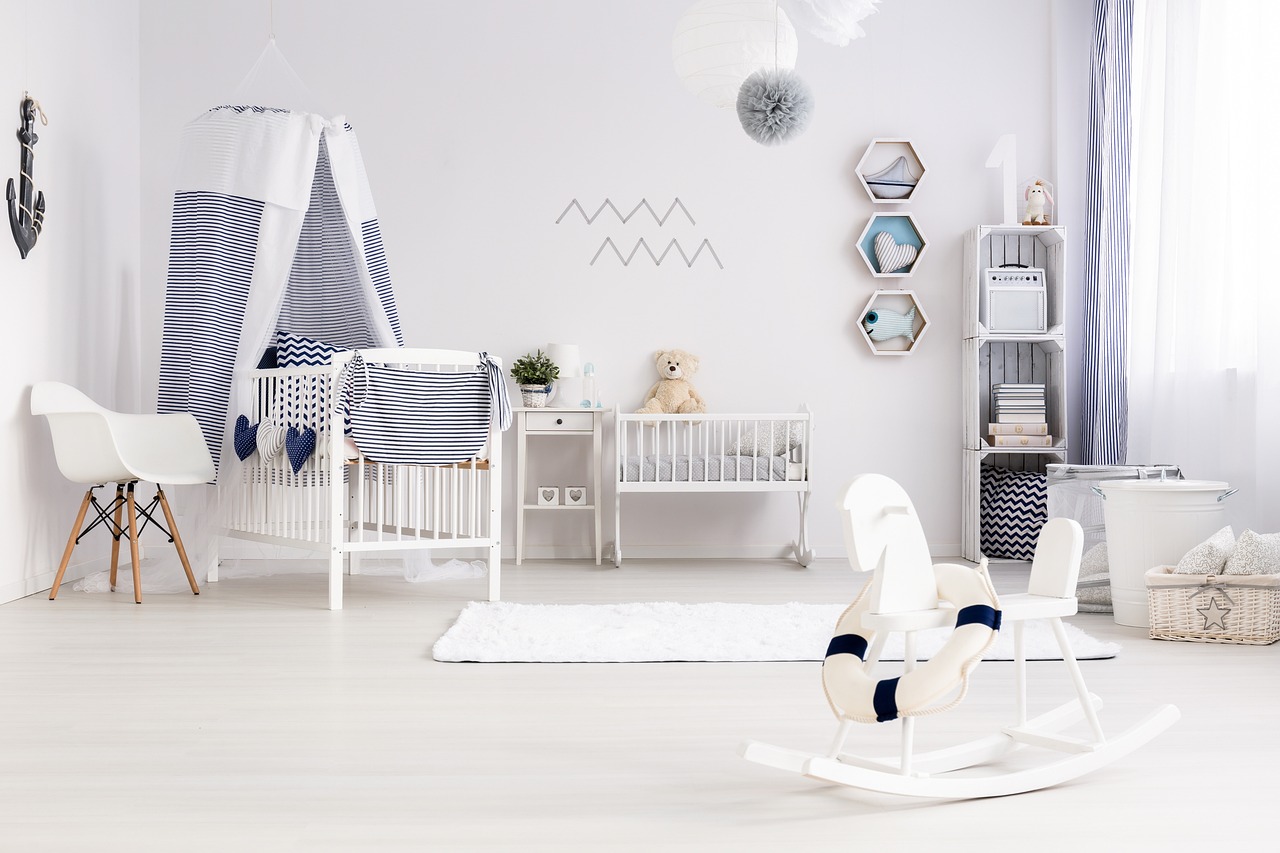
Signs of Wear and Tear
When it comes to repurposing old furniture, recognizing signs of wear and tear is a crucial step that can significantly influence your project. Imagine you’ve found a beautiful vintage chair at a thrift store, but as you inspect it closely, you notice a few issues that could affect its functionality and aesthetic appeal. Identifying these problems early on can save you time and effort, ensuring that your creative vision becomes a reality without unexpected setbacks.
Common signs of wear and tear include scratches, dents, and loose joints. Each of these issues requires a different approach, so let's break them down:
- Scratches: Surface scratches can often be sanded down or filled with wood filler, and then painted or stained to match the surrounding area. However, deep scratches may require more extensive refinishing.
- Dents: Small dents can sometimes be popped out with steam or moisture, while larger ones may need to be filled and sanded. Depending on their location, you might want to consider how they fit into your design plan.
- Loose Joints: If you notice any wobbling or instability in your furniture, it’s essential to address these loose joints. A simple tightening of screws or a bit of wood glue can often do the trick, but in some cases, you may need to completely disassemble and reassemble the piece.
Additionally, keep an eye out for fading or discoloration in the finish, which can be a telltale sign of age and exposure to sunlight. This can often be remedied with a fresh coat of paint or stain, allowing you to breathe new life into the piece while adding a personal touch. Furthermore, if the furniture has any upholstery, look for signs of stains, tears, or fraying fabric. These can often be addressed by reupholstering or adding a slipcover, making your furniture not only functional but also stylish.
By taking the time to assess these signs of wear and tear, you’ll be better equipped to make informed decisions about how to repurpose your old furniture. Remember, each mark tells a story, and with a little creativity and effort, you can transform these imperfections into unique features that enhance the overall character of your home.
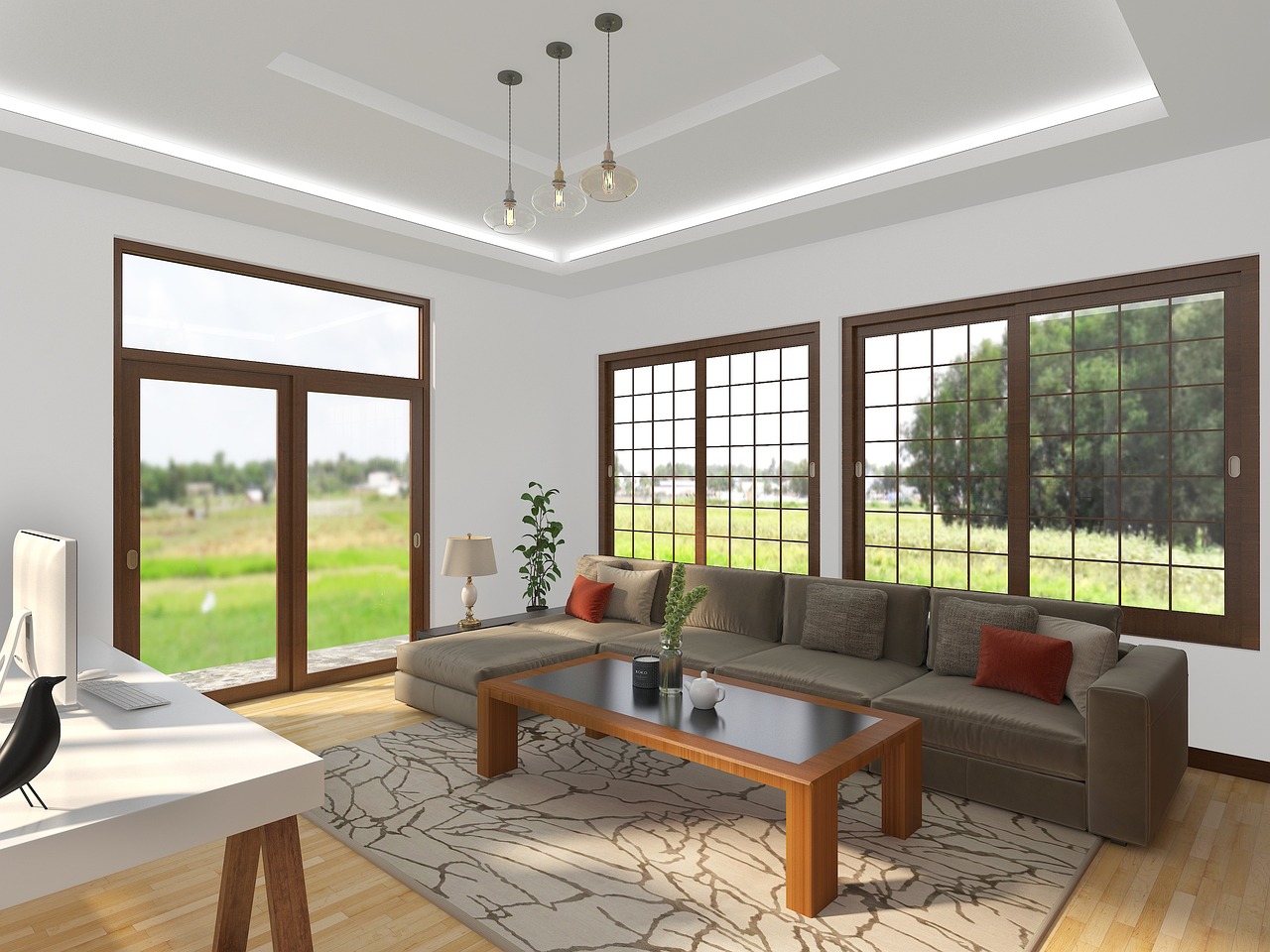
Evaluating Aesthetic Potential
When it comes to repurposing old furniture, one of the most exciting aspects is evaluating its aesthetic potential. This is where your creativity can truly shine! Take a moment to look beyond the surface and envision how you can transform that tired piece into something spectacular. Start by considering the style and design of the furniture. Is it a vintage dresser with intricate carvings? A modern coffee table with clean lines? Each piece tells a story, and your job is to enhance that narrative.
Next, think about how the piece fits into your overall home decor. Does it complement your existing color palette? Can it serve a new function in a different room? For example, an old trunk could be reimagined as a chic coffee table, adding both style and storage to your living room. By evaluating these aspects, you can identify the best possible uses for your furniture while ensuring it aligns with your personal style.
Additionally, pay attention to the materials and textures involved. Wood, metal, and upholstery can all be refreshed with the right techniques. A simple coat of paint or a new fabric can dramatically change the look of a piece. Don't shy away from experimenting with bold colors or patterns that reflect your personality. Remember, the goal is not just to repurpose but to create something that feels uniquely yours!
To help you visualize your ideas, consider creating a mood board. This can be a physical collage or a digital collection of images that inspire you. Include colors, textures, and styles that resonate with you. When you have a clear vision of what you want, the actual process of repurposing will become much easier and more enjoyable.
In summary, evaluating the aesthetic potential of your old furniture is about seeing the hidden possibilities within. By considering its style, function, and materials, you can breathe new life into your pieces while making a statement in your home. So grab your tools, unleash your creativity, and let your imagination run wild!
- What is repurposing? Repurposing is the process of transforming old furniture into new, functional items, often enhancing their aesthetic appeal and usefulness.
- How do I know if my furniture is worth repurposing? Assess the condition, structural integrity, and aesthetic potential of your piece. If it has good bones and you see creative possibilities, it's worth considering!
- What tools do I need for repurposing furniture? Basic tools include screwdrivers, sanders, paint brushes, and safety gear. Having the right tools can make your project smoother and more enjoyable.
- Can I repurpose furniture on a budget? Absolutely! Look for materials at thrift stores, garage sales, or even your own home. Creativity often thrives on a budget!
- How do I choose the right colors for my repurposed furniture? Consider your existing decor and personal style. Use a mood board to explore color combinations that inspire you and fit your vision.
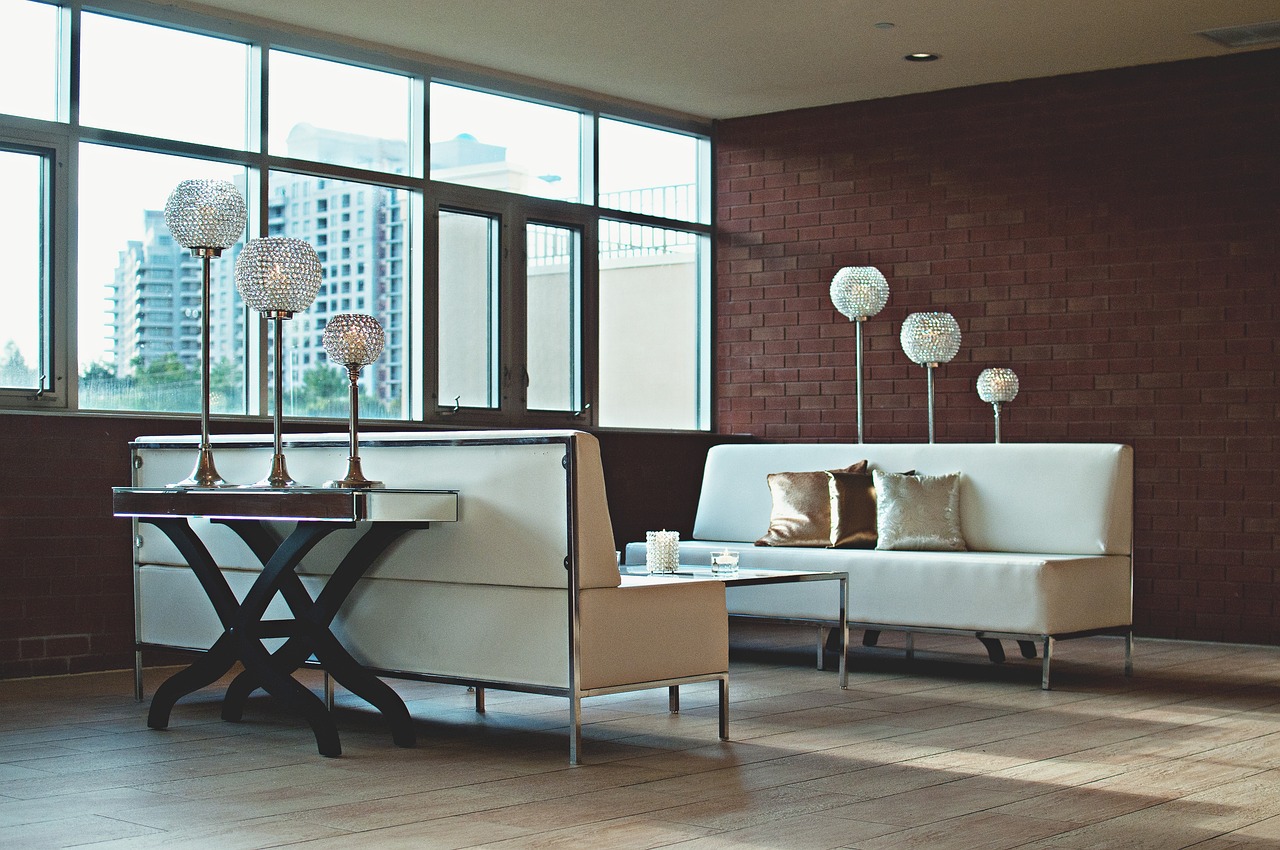
Choosing Repurposing Techniques
When it comes to repurposing old furniture, the techniques you choose can make all the difference in the final outcome. Think of it like cooking; the ingredients you select and how you prepare them can transform a simple dish into a gourmet meal. Similarly, the right techniques can turn a tired piece of furniture into a stunning focal point in your home. There are numerous methods available, each with its own unique flair and functionality. Let's dive into some popular techniques that can help you unlock the potential of your old furniture.
First up is upcycling. This technique involves taking something that might be considered waste and creatively transforming it into something of higher value. For example, an old wooden crate can be turned into a stylish coffee table with just a bit of sanding and a fresh coat of paint. Upcycling not only gives your furniture a new lease on life but also contributes to a more sustainable lifestyle by reducing waste. You can get as creative as you want—think about turning a vintage suitcase into a quirky side table or using old doors to create a unique headboard.
Next, we have refinishing. This technique focuses on restoring the original beauty of your furniture. If you have a wooden piece that has seen better days, refinishing can bring back its natural charm. This process typically involves sanding down the surface, applying a wood stain or finish, and sealing it to protect against future wear and tear. Refinishing is perfect for those who love the classic look of wood and want to preserve it while giving it a modern twist.
Another popular method is reupholstering. If you have an old chair or sofa that feels a bit drab, changing the upholstery can breathe new life into it. This technique allows you to select fabrics that match your personal style, whether that’s bold patterns or soft neutrals. Reupholstering can be a bit more labor-intensive, but the results can be incredibly rewarding. Imagine taking a worn-out armchair and transforming it into a vibrant statement piece that sparks joy every time you see it!
For those who enjoy a bit of DIY, painting is another fantastic option. A simple coat of paint can dramatically change the appearance of your furniture. Whether you opt for a bright hue to make a bold statement or a soft pastel for a more subdued look, painting can instantly refresh your pieces. Don’t forget about the possibilities of distressing or using stencils for added flair. These techniques can give your furniture a vintage or artistic touch that reflects your personality.
Finally, consider functional repurposing. This involves reimagining the use of a piece entirely. For instance, an old dresser can be transformed into a stylish TV stand, or a ladder can become a unique bookshelf. The key here is to think outside the box and envision how your old furniture can serve a new purpose in your home. This approach not only saves money but also allows you to create custom solutions that fit your space perfectly.
In summary, choosing the right repurposing technique is essential to ensuring that your project is successful and enjoyable. Whether you decide to upcycle, refinish, reupholster, paint, or functionally repurpose, each method offers a unique way to express your creativity and bring your personal style into your home. So grab your tools, unleash your imagination, and get ready to transform that old furniture into something extraordinary!
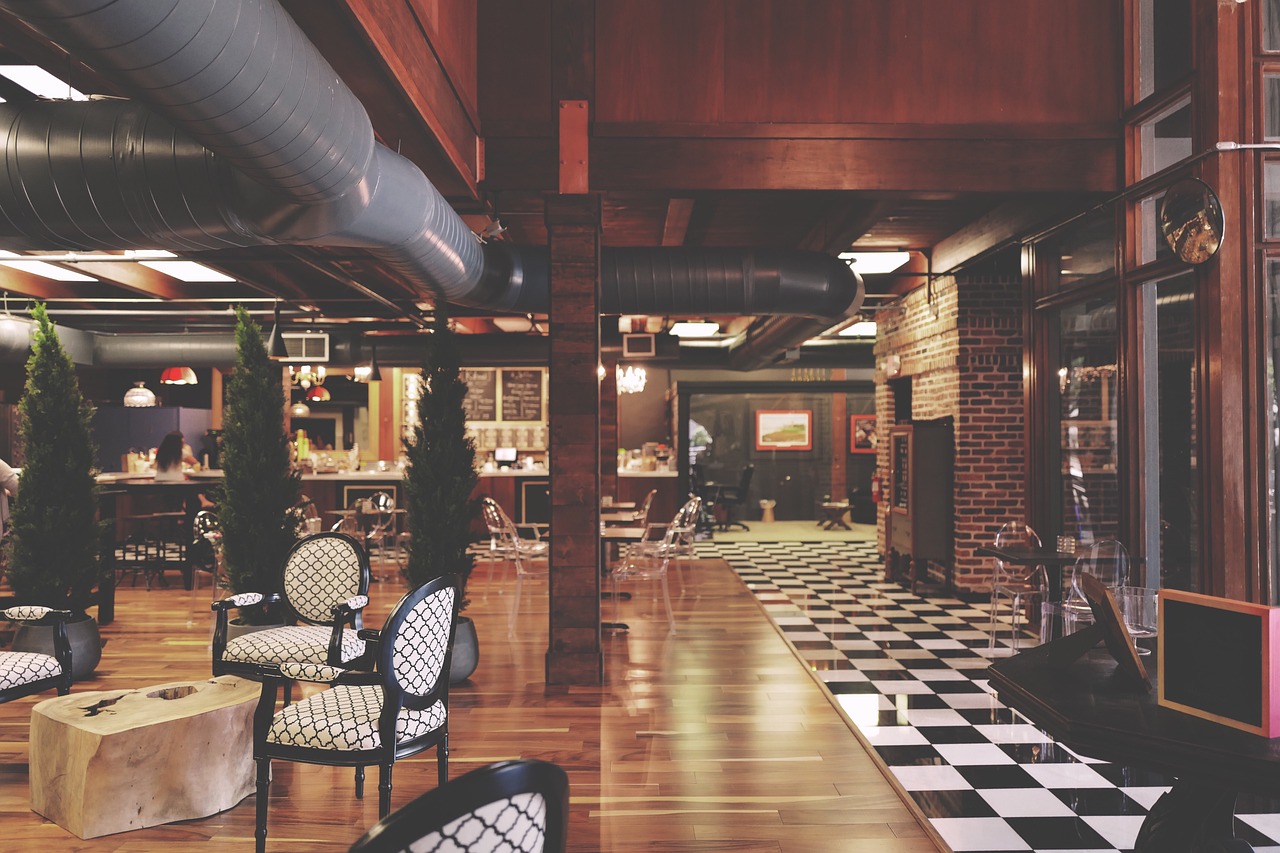
Tools and Materials Needed
When it comes to repurposing old furniture, having the right tools and materials can make all the difference in your project's success. Whether you're a seasoned DIY enthusiast or just starting out, it's essential to gather a few key items before diving into your creative transformation. Imagine embarking on a culinary adventure without your favorite utensils; the same goes for furniture repurposing. You need the right gear to turn your vision into reality!
First off, let's talk about the basic tools you will need. A well-stocked toolkit is your best friend in this journey. Key items include screwdrivers, sandpaper or a sander, paint brushes, and a measuring tape. These tools will help you disassemble, smooth, and finish your furniture pieces effectively. For example, a screwdriver is crucial for taking apart old furniture, while sandpaper will help you prep surfaces for painting or staining. Don't underestimate the importance of a good measuring tape—it's vital for ensuring your new designs fit perfectly in your designated spaces.
Next, consider the materials you'll need to breathe new life into your furniture. This includes a variety of finishes, paints, and fabrics. The right paint can transform a dull piece into a vibrant centerpiece, while new upholstery can provide comfort and style. For example, if you're refinishing a wooden chair, you might opt for a water-based paint that is easy to clean and environmentally friendly. Additionally, the choice of fabric can make or break your project. Look for durable, high-quality materials that reflect your personal style and can withstand daily use.
Here's a quick overview of some essential tools and materials you might want to consider:
| Tool/Material | Purpose |
|---|---|
| Screwdrivers | To disassemble furniture pieces. |
| Sander/Sandpaper | To smooth surfaces and prepare for painting. |
| Paint Brushes | For applying paint or finishes. |
| Measuring Tape | To ensure accurate measurements for your projects. |
| Wood Glue | For repairing joints and reinforcing structures. |
| Fabrics | For reupholstering furniture. |
| Finishes/Paints | To enhance and protect the surface of your furniture. |
Lastly, don’t forget about safety gear! While it may not be as exciting as the tools and materials, wearing a good pair of gloves, a dust mask, and safety goggles can protect you from dust and debris, especially when sanding or using power tools. Remember, safety first, because you want to enjoy your creative process without any mishaps!
With these tools and materials in hand, you're well on your way to transforming your old furniture into stunning, functional pieces that reflect your unique style. So gather your gear, roll up your sleeves, and let your imagination run wild!
Q: What are the best types of wood for repurposing furniture?
A: Hardwoods like oak and maple are excellent choices due to their durability, but softwoods like pine can also be great for projects that require a lighter touch.
Q: Can I repurpose furniture without prior DIY experience?
A: Absolutely! Start with simple projects and gradually take on more complex ones as you gain confidence and skills.
Q: Where can I find old furniture to repurpose?
A: Check out thrift stores, garage sales, and online marketplaces. You’d be surprised at the treasures you can find!
Q: How do I ensure my repurposed furniture is safe to use?
A: Always check for structural integrity and make necessary repairs. If you're unsure, consult a professional for advice.
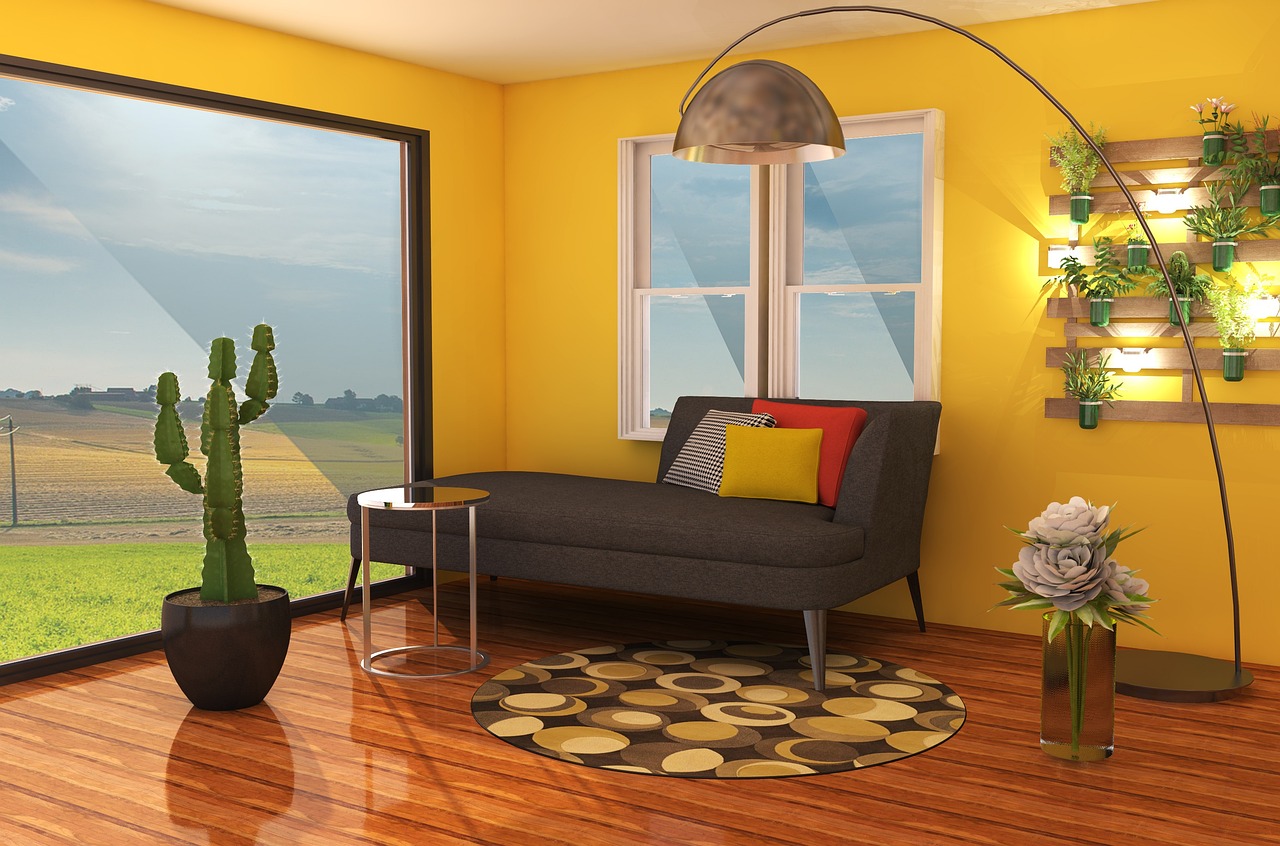
Basic Tools for Repurposing
When diving into the exciting world of furniture repurposing, having the right tools can make all the difference between a smooth, enjoyable project and a frustrating experience. Think of your tools as your trusty sidekicks; they’re essential for bringing your creative visions to life. So, what do you really need to get started? Here’s a rundown of the basic tools that should be in every DIY enthusiast's arsenal:
First and foremost, a good set of screwdrivers is indispensable. You’ll need both flathead and Phillips screwdrivers to tackle various screws you might encounter. Next up is a power drill, which can save you a significant amount of time and effort when assembling or disassembling furniture. If you plan on doing a lot of sanding, consider investing in an orbital sander. It will help you achieve a smooth finish much faster than sanding by hand.
Additionally, a measuring tape is crucial for ensuring that everything fits perfectly in your space. You wouldn’t want to create a beautiful piece only to find out it’s too large or small for your intended area! A level is also important to make sure your new creation stands tall and straight. And let’s not forget about safety gear—gloves and goggles should always be on hand to protect yourself while working.
Here’s a quick overview of essential tools:
- Screwdrivers: Flathead and Phillips
- Power Drill: For easy assembly and disassembly
- Orbital Sander: For smooth finishes
- Measuring Tape: To ensure proper dimensions
- Level: To keep everything straight
- Safety Gear: Gloves and goggles
Finally, don't overlook the importance of a paintbrush or two! Whether you’re applying a fresh coat of paint, stain, or sealer, having a variety of brushes will help you achieve the best results. If you’re feeling adventurous, consider adding some specialty tools like a jigsaw for cutting shapes, or a clamp to hold pieces together while the glue dries.
In summary, equipping yourself with these basic tools will set you up for success as you embark on your furniture repurposing journey. Remember, the right tools not only make the job easier but also enhance your overall experience, allowing you to focus on unleashing your creativity!
Q: Do I need to be an expert to repurpose furniture?
A: Not at all! Repurposing furniture is all about creativity and experimentation. Start with simple projects and gradually try more complex ones as you gain confidence.
Q: What if my old furniture is in poor condition?
A: Even if your furniture has seen better days, many pieces can be transformed with a little effort. Assess the structural integrity and consider how you can incorporate repairs into your design.
Q: Are there specific materials I should use for repurposing?
A: It depends on the project! Generally, using high-quality paints, stains, and finishes will ensure your repurposed piece not only looks good but lasts longer. Always choose materials that suit your style and the intended use of the furniture.
Q: Can I repurpose furniture without power tools?
A: Yes! While power tools can make the process quicker, many projects can be completed with hand tools. Just be prepared for a bit more manual labor!
Q: How can I find inspiration for my repurposing projects?
A: Inspiration can be found everywhere! Check out social media platforms like Pinterest and Instagram, visit local thrift stores, or join DIY communities to see what others are creating.
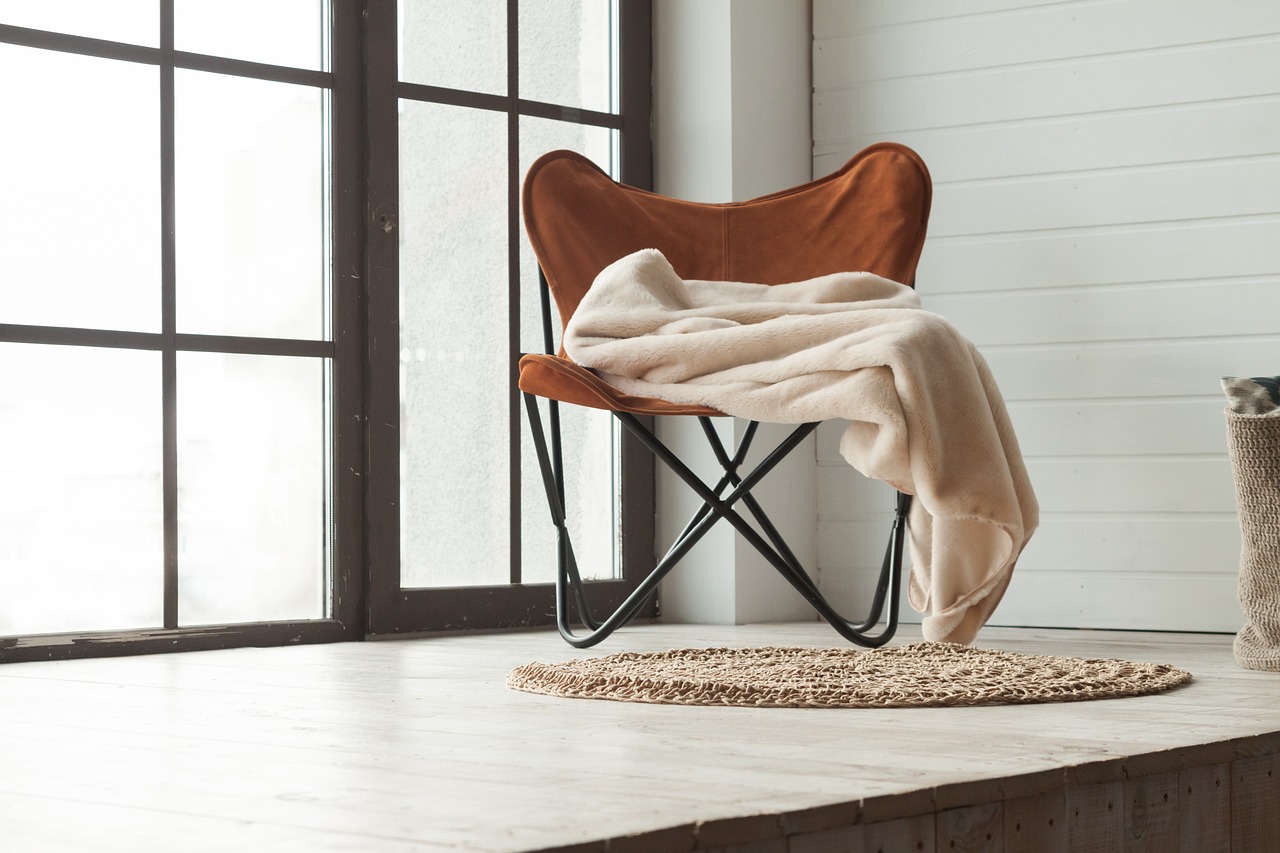
Choosing the Right Materials
When it comes to repurposing old furniture, is essential for achieving a successful transformation. The materials you select can significantly impact not only the aesthetic appeal of your finished piece but also its durability and functionality. Imagine transforming a worn-out chair into a stunning accent piece or a tired table into a chic centerpiece; the right materials can make all the difference!
First and foremost, consider the finish you want for your furniture. Are you aiming for a rustic, farmhouse look or a sleek, modern vibe? Different finishes can help you achieve your desired style. For instance, if you're going for a distressed look, you might opt for chalk paint, which can easily be sanded down to create a weathered appearance. On the other hand, if you prefer a glossy finish, a high-quality polyurethane or enamel paint would be more suitable.
Next, think about the fabrics you might want to use, especially if your project involves upholstery. Selecting the right fabric can elevate your piece from ordinary to extraordinary. Consider materials that are not only visually appealing but also durable and easy to clean, especially if the furniture will be used frequently. Fabrics like canvas, denim, or even outdoor upholstery can withstand wear and tear while adding a pop of color or pattern to your design.
Additionally, don't overlook the importance of hardware in your repurposing project. New knobs, handles, or hinges can completely transform the look of a piece. You can find unique hardware at thrift stores, online marketplaces, or specialty shops, allowing you to add a personal touch to your furniture. Mixing and matching different styles can create an eclectic, personalized look that reflects your style.
Lastly, consider sustainability when choosing materials. Opting for eco-friendly paints, finishes, and fabrics can not only enhance your project but also contribute to a more sustainable lifestyle. Look for products that are low in volatile organic compounds (VOCs) and made from recycled materials. This choice not only benefits the environment but also ensures a healthier home for you and your family.
In summary, the materials you choose play a pivotal role in the success of your repurposing project. By carefully selecting finishes, fabrics, hardware, and eco-friendly options, you can breathe new life into old furniture and create stunning pieces that reflect your personality and style. So, are you ready to dive into your next DIY adventure?
- What types of paint are best for repurposing furniture?
Chalk paint is popular for a matte finish, while acrylic or enamel paints provide a glossy look and durability. - How do I choose the right fabric for upholstery projects?
Look for durable, easy-to-clean fabrics like canvas or outdoor upholstery, especially for frequently used pieces. - Where can I find unique hardware for my furniture?
Thrift stores, flea markets, and online marketplaces are great places to find unique knobs and handles. - What are some eco-friendly options for repurposing materials?
Choose paints and finishes that are low in VOCs and fabrics made from recycled materials to ensure a sustainable project.
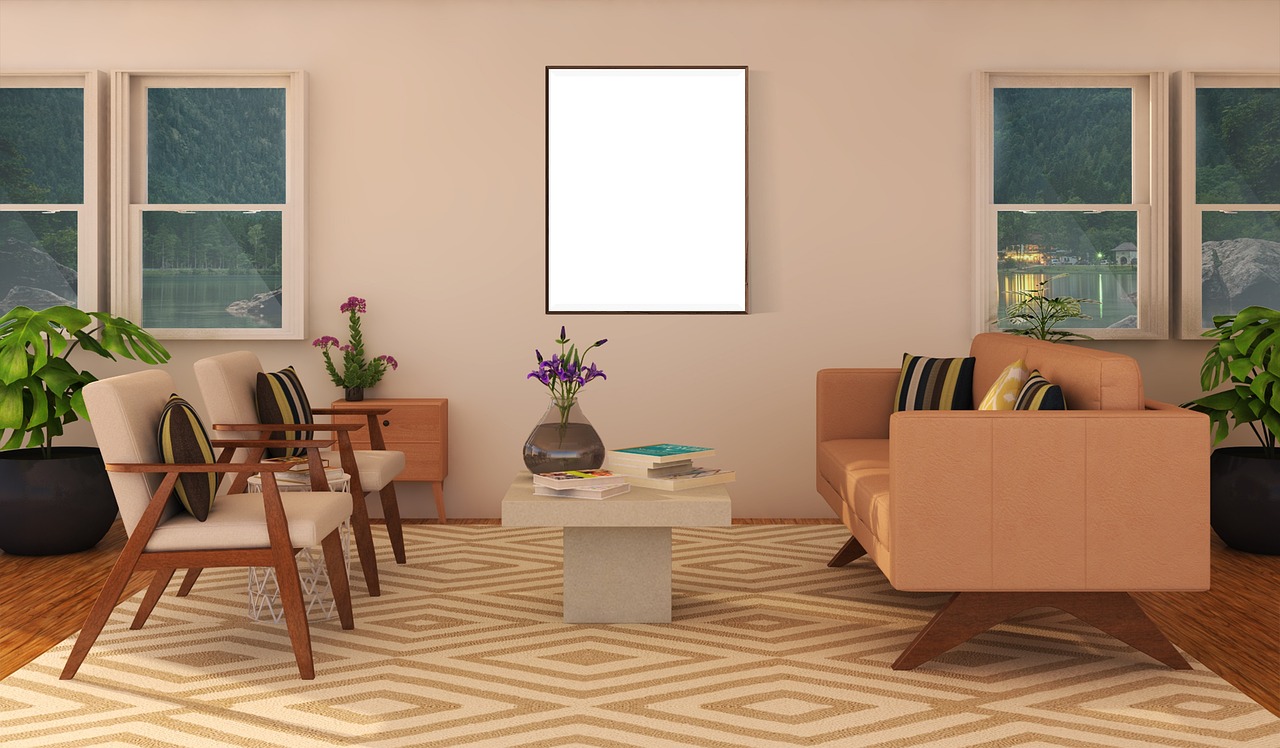
Inspiring Repurposing Ideas
When it comes to repurposing old furniture, the possibilities are as limitless as your imagination! Old pieces can be transformed into stunning new items that not only serve a purpose but also add a unique touch to your home decor. Let's dive into some creative ideas that will inspire you to take that old chair or table sitting in the corner and give it a fabulous makeover.
One of the most exciting transformations is turning a vintage dresser into a stylish TV stand. Imagine a beautifully painted dresser with the drawers removed, providing ample space for your media devices while keeping the charming aesthetic of the old piece. You can even add a fresh coat of paint in a bold color to make it a statement piece in your living room.
Another fantastic idea is to convert an old wooden ladder into a whimsical bookshelf. With a little sanding and some creativity, you can lean the ladder against a wall and use it to display your favorite books and decorative items. This not only saves space but also adds a rustic charm to your home.
If you have an old door lying around, consider transforming it into a unique dining table or a desk. By adding some sturdy legs or repurposing an old table base, you can create a one-of-a-kind piece that will surely be a conversation starter during gatherings. Pair it with mismatched chairs for an eclectic vibe that showcases your personal style.
For those who love outdoor spaces, an old trunk can be repurposed into a charming outdoor coffee table. Simply clean it up, add a weather-resistant finish, and you have a perfect spot to set down drinks during summer barbecues. The trunk can also serve as storage for outdoor cushions or games, making it both functional and stylish.
Don't forget about seasonal and thematic projects! For example, you can repaint an old side table in festive colors for the holidays or add some seasonal decor to your repurposed items. Think about using an old window frame to create a seasonal display that can be updated throughout the year. This not only showcases your creativity but also keeps your home feeling fresh and inviting.
Repurposing is not just about giving old furniture a new life; it’s also about expressing your personality and creativity. Whether you’re a seasoned DIY enthusiast or just starting, each project is a chance to learn, experiment, and make something truly unique. So gather your tools, unleash your creativity, and let your imagination run wild!
Q: What are some easy furniture pieces to repurpose for beginners?
A: Start with simple items like chairs, side tables, or crates. These can be easily transformed with paint or minor adjustments.
Q: Do I need special tools to repurpose furniture?
A: While basic tools like screwdrivers, sanders, and paint brushes are helpful, you don’t need anything fancy to get started. Most projects can be done with a simple toolkit!
Q: How can I ensure my repurposed furniture is safe to use?
A: Always check for structural integrity before starting your project. Make sure to fix any loose joints or damages to ensure safety and durability.
Q: Can I repurpose furniture without painting it?
A: Absolutely! You can repurpose furniture by reupholstering, adding new hardware, or simply rearranging its function without painting.
Q: What should I do if my furniture has a strong odor?
A: Clean the furniture thoroughly and let it air out. You can also use baking soda to absorb odors or apply a vinegar solution to help neutralize any smells.

Furniture Transformations for Every Room
When it comes to repurposing old furniture, every room in your home holds a treasure trove of possibilities waiting to be uncovered. Imagine transforming that outdated dresser into a chic TV stand for your living room, or turning a simple wooden ladder into a stunning bookshelf that adds character to your space. Each room offers unique opportunities to breathe new life into tired pieces, allowing you to express your personal style while also making functional improvements.
In the living room, consider reimagining an old coffee table. With a little creativity, you can turn it into a stylish ottoman or even a unique storage solution by adding some cushions and storage baskets underneath. Similarly, an old trunk can become a conversation piece when placed in front of your sofa, serving both as a coffee table and a storage space for blankets and magazines.
Moving to the bedroom, think about that vintage nightstand that’s seen better days. A fresh coat of paint and new hardware can transform it into a stunning bedside table that complements your decor. Or, if you have an old wooden headboard, why not repurpose it into a beautiful bench for your entryway? Just add some cushions, and you’ve created a cozy spot for putting on shoes or dropping off bags.
The kitchen is another area ripe for transformation. An old dining table can be refinished and turned into a kitchen island, providing extra prep space and a casual dining area. Alternatively, you can take mismatched chairs, paint them in a uniform color, and create a cohesive look that adds charm to your dining setup. Don't overlook the potential of old cabinets either; with some creativity, they can become open shelving units that display your favorite dishes and cookbooks.
In the bathroom, an old wooden ladder can serve as a stylish towel rack, while an antique dresser can be converted into a vanity with a little modification. Adding a sink and a mirror can create a stunning focal point that combines functionality with vintage charm.
As you embark on these transformations, remember that the key is to let your creativity flow. Each piece you repurpose tells a story and adds a unique touch to your home. So, gather your tools, unleash your imagination, and start transforming those forgotten furniture pieces into stunning additions for every room!
Q: What types of furniture are best for repurposing?
A: Almost any old furniture can be repurposed! Look for solid wood pieces like dressers, tables, and chairs, as they tend to be more durable and versatile for various projects.
Q: Do I need special skills to repurpose furniture?
A: While basic DIY skills are helpful, many repurposing projects can be accomplished by beginners. Start with simple transformations and gradually tackle more complex projects as you gain confidence.
Q: How can I ensure my repurposed furniture is safe to use?
A: Always check the structural integrity of the furniture before repurposing it. Make necessary repairs and ensure it is stable and safe for its new function.
Q: Where can I find inspiration for my furniture transformations?
A: Social media platforms like Pinterest and Instagram are great places to find inspiration. You can also join DIY communities and forums where enthusiasts share their projects.
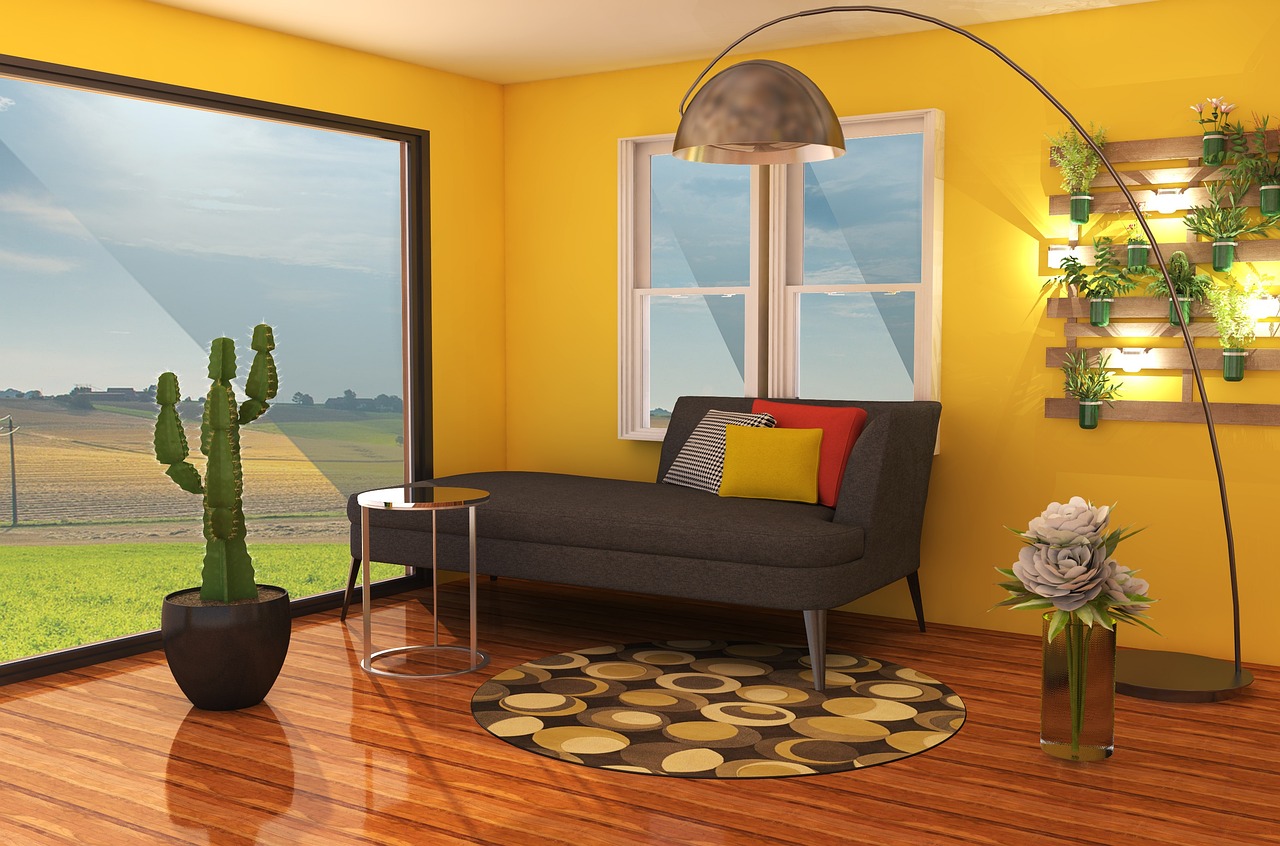
Seasonal and Thematic Projects
When it comes to repurposing old furniture, embracing seasonal and thematic projects can add a delightful twist to your home decor. Imagine transforming a simple wooden chair into a charming Halloween decoration or giving a tired bookshelf a spring makeover. The key here is to let your creativity flow and align your repurposing efforts with the changing seasons or specific themes that resonate with you.
For instance, during the fall, you might consider painting an old dresser in warm, earthy tones, then using it as a display for your autumn decorations. Add some pumpkins, dried leaves, and cozy blankets, and you've created a stunning focal point for your living space. Similarly, in the spring, you can breathe new life into a vintage trunk by painting it in pastel colors and filling it with fresh flowers or seasonal decor items. This not only enhances the aesthetic of your home but also brings a sense of freshness and renewal.
Another fun idea is to create themed furniture pieces for holiday celebrations. For example, you could repurpose an old table into a festive buffet for your holiday gatherings. With a bit of paint, some decorative accents, and perhaps a few seasonal tablecloths, you can turn a mundane piece into a centerpiece that sparks joy and conversation among your guests.
Here are a few more ideas to inspire your seasonal and thematic projects:
- Summer: Turn an old ladder into a charming outdoor display for potted plants.
- Halloween: Transform a vintage trunk into a spooky candy chest for trick-or-treaters.
- Winter: Repurpose a bookshelf into a cozy hot cocoa station, complete with mugs and toppings.
By thinking outside the box and allowing the seasons to guide your repurposing journey, you not only create beautiful decor but also foster a deeper connection with your home. Each project becomes a reflection of your personality and the joy of celebrating life's moments.
So, gather your old furniture, unleash your creativity, and let the seasons inspire you to create unique, thematic pieces that tell a story and bring warmth to your living space.
Q: What types of furniture are best for repurposing?
A: Almost any piece can be repurposed! Look for items that are sturdy and have a unique shape or design. Common choices include chairs, tables, dressers, and bookshelves.
Q: Do I need special skills to repurpose furniture?
A: Not at all! Basic DIY skills are helpful, but many projects can be completed with minimal experience. Just take your time and follow tutorials if needed.
Q: How can I ensure my repurposed furniture is durable?
A: Always assess the structural integrity of the furniture before starting. Use quality materials and finishes, and follow safety guidelines during your projects.
Q: Can I repurpose furniture for outdoor use?
A: Yes! Just make sure to use weather-resistant materials and finishes to ensure your repurposed pieces can withstand the elements.
Q: Where can I find inspiration for my repurposing projects?
A: Social media platforms like Pinterest and Instagram are great for finding ideas. You can also join local DIY groups or forums to connect with other enthusiasts.

Tips for Successful Repurposing
Achieving a successful repurposed piece requires a combination of planning, patience, and a sprinkle of creativity. Before diving into your project, it's essential to outline a clear plan. This means taking the time to think through each step of the process. Start by identifying the piece of furniture you want to repurpose and envision its new life. Will it become a stylish coffee table, a chic bookshelf, or perhaps a unique garden planter? By setting realistic goals, you can maintain your motivation and ensure that your project stays on track.
Furthermore, don't underestimate the importance of a clean and organized workspace. A clutter-free environment not only enhances your focus but also minimizes the risk of accidents. Make sure to gather all the necessary tools and materials before you start, creating a checklist to ensure you have everything at hand. This preparation can save you from frustrating trips to the hardware store mid-project!
When it comes to safety, it should always be your top priority. Remember to wear protective gear, such as gloves and goggles, especially when sanding or painting. Following safety guidelines can prevent injuries and keep your creative juices flowing without interruptions. It’s also wise to keep a first-aid kit nearby, just in case. After all, a little precaution goes a long way in ensuring a smooth crafting experience.
Another tip for successful repurposing is to embrace the learning curve. Not every project will go as planned, and that’s perfectly okay! If you encounter challenges, view them as opportunities to learn and improve your skills. Perhaps you’ll discover a new technique or find an innovative solution to a problem. This adaptability will not only enhance your DIY journey but also make it more enjoyable.
Lastly, don’t forget to document your progress. Taking photos of each stage of your project will not only serve as a fun way to look back at your hard work but also provide inspiration for others who may want to tackle similar projects. Sharing your journey on social media or a blog can connect you with a community of fellow DIY enthusiasts, creating a space for encouragement and idea exchange.
- What type of furniture is best for repurposing? Generally, sturdy pieces like wooden furniture are ideal for repurposing. Look for items that have good structural integrity.
- Do I need special tools for repurposing furniture? While a basic toolkit will suffice, having additional tools like a sander or a staple gun can make the process easier and more efficient.
- How can I ensure my repurposed furniture is durable? Choosing high-quality paints and finishes, as well as properly preparing the surface before applying them, will enhance durability.
- Can I repurpose furniture without prior experience? Absolutely! Many successful DIYers started with no experience. Just take your time, follow tutorials, and don’t be afraid to experiment.

Planning Your Project
Effective planning can make all the difference when it comes to repurposing old furniture. Imagine embarking on a treasure hunt; without a map, you might get lost or miss out on hidden gems. Similarly, having a clear plan ensures that your journey from outdated to outstanding is smooth and enjoyable. Start by outlining your project steps. What exactly do you want to achieve? Whether it’s turning a tired old chair into a chic side table or transforming a worn-out dresser into a stylish TV stand, having a vision is crucial.
Next, consider setting a realistic timeline. It’s easy to get excited and want to complete everything in one weekend, but remember that good things take time. Break your project into manageable stages, such as:
- Assessing the furniture
- Gathering materials
- Executing the repurposing
- Finishing touches and styling
By pacing yourself, you’ll maintain enthusiasm and avoid burnout. Plus, it allows you to enjoy the process rather than rushing to the finish line.
Gathering inspiration is another key aspect of planning. Scour the internet, browse through Pinterest boards, or flip through home decor magazines. Create a mood board to visualize your ideas. This can be a physical corkboard or a digital collection of images, colors, and textures that resonate with your vision. It’s like creating a recipe before you start cooking; having all your ingredients in one place helps you see the bigger picture.
Finally, make sure to keep your workspace organized. A cluttered area can lead to mistakes and accidents. Set up a dedicated space where everything you need is easily accessible. This not only enhances your productivity but also keeps your creative energy flowing.
In summary, planning your project involves:
- Defining your goals and vision
- Setting a realistic timeline
- Gathering inspiration
- Maintaining an organized workspace
With these steps, you’ll be well on your way to creating something truly unique and beautiful from your old furniture.
Q: What types of furniture are best for repurposing?
A: Almost any piece of furniture can be repurposed, but items like dressers, chairs, and tables tend to offer the most versatility. Look for pieces that have good structural integrity and a style that can be easily adapted.
Q: How do I know if my furniture is worth repurposing?
A: Evaluate the condition of the furniture. If it has solid construction and minimal damage, it’s likely worth the effort. Even if it shows signs of wear, with the right creativity, it can be transformed into something stunning.
Q: Can I repurpose furniture without any DIY experience?
A: Absolutely! Many repurposing projects can be simple and beginner-friendly. Start with small projects, follow tutorials, and gradually build your skills and confidence.
Q: Where can I find inspiration for my projects?
A: Inspiration can be found everywhere! Check out social media platforms like Pinterest and Instagram, visit local thrift stores, or browse through home decor blogs and magazines.
Q: What tools do I need to get started?
A: Basic tools like screwdrivers, sanders, and paint brushes are essential. Depending on your project, you might also need additional items like wood glue, clamps, and safety gear.

Maintaining Safety and Cleanliness
When diving into the world of furniture repurposing, is crucial. Not only does it protect you from potential injuries, but it also ensures that your workspace remains organized and efficient. Imagine trying to create a masterpiece in a chaotic environment – it’s like trying to paint a beautiful landscape while standing in a tornado! To avoid such a scenario, here are some key safety measures to keep in mind:
First and foremost, always wear appropriate protective gear. This includes safety goggles to shield your eyes from dust and debris, gloves to protect your hands from splinters and chemicals, and a mask if you’re working with paints or finishes that release fumes. It’s easy to underestimate the importance of these items, but they can make a significant difference in your overall safety.
Next, ensure that your workspace is clean and free of clutter. A tidy area not only helps you find tools and materials more easily but also minimizes the risk of accidents. You might want to establish a designated area for your tools and materials, perhaps using a small table or a rolling cart. This way, everything you need is within arm's reach, and you won’t have to navigate through a maze of items while working.
Additionally, it’s wise to familiarize yourself with the tools you’ll be using. Knowing how to operate tools like saws, drills, and sanders can prevent mishaps. If you’re unsure about a tool, take a moment to read the instructions or watch a tutorial. Think of it as learning to ride a bike – you wouldn’t hop on without knowing how to balance, right?
Another important aspect is to keep your workspace well-ventilated, especially when using paints, stains, or adhesives. Poor ventilation can lead to the buildup of harmful fumes, which can be detrimental to your health. Open windows or use fans to circulate air, and consider working outdoors when possible. This not only keeps you safe but also allows you to enjoy the fresh air while you work!
Lastly, always have a first aid kit on hand. Accidents can happen, even when you’re being cautious. A quick response can make a world of difference, so having band-aids, antiseptic wipes, and other essentials nearby is a smart move.
In summary, maintaining safety and cleanliness while repurposing old furniture is all about preparation and awareness. By taking the necessary precautions and ensuring your workspace is organized, you can focus on the fun and creative aspects of your project without unnecessary distractions or dangers.
- What safety gear should I wear when repurposing furniture?
It’s important to wear safety goggles, gloves, and a mask, especially when working with paints or power tools. - How can I keep my workspace organized?
Establish a designated area for tools and materials, and regularly clean up as you work to maintain a tidy environment. - What should I do if I have an accident while working?
Always have a first aid kit nearby, and know how to treat minor injuries. For serious accidents, seek professional medical help immediately. - Can I work indoors while using strong chemicals?
It’s best to work in a well-ventilated area or outdoors when using strong chemicals to avoid inhaling harmful fumes.
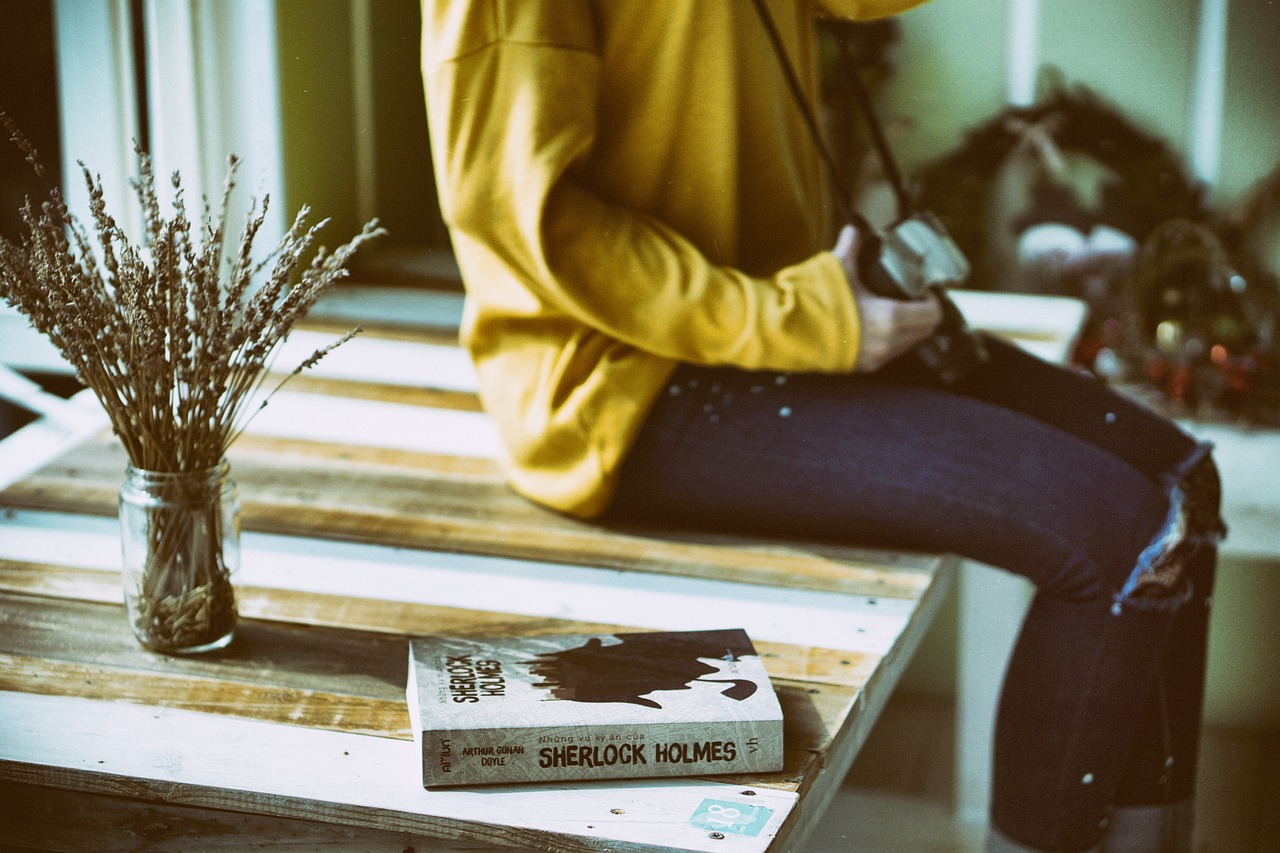
Final Touches and Presentation
Once you've poured your heart and soul into repurposing your old furniture, it’s time to think about the final touches that will make your piece truly shine. After all, the last step can often be the most rewarding, as it allows you to showcase your creativity and craftsmanship. So, how do you ensure your newly transformed furniture not only looks great but also fits seamlessly into your home decor? Let’s dive into some practical tips!
First, consider the styling of your repurposed piece. This is where you can really let your personality shine through! Think about the overall aesthetic of your room and how your new furniture fits into that vision. For instance, if you’ve turned an old dresser into a chic TV stand, think about how you can accessorize it. Perhaps you could add a few decorative items like candles, books, or plants to create a cozy atmosphere. Remember, the goal is to create a cohesive look that highlights your creativity while also complementing your existing decor.
Another essential aspect of presentation is color coordination. Choose colors that not only enhance the beauty of your repurposed furniture but also harmonize with the surrounding elements in your home. For example, if your piece is painted in a bold color, consider using softer hues in the decor around it to balance the visual impact. A well-thought-out color scheme can elevate your furniture from just being functional to a true centerpiece of your living space.
To help you visualize the final arrangement, you might want to create a mood board or a simple sketch. This can be as easy as using a piece of paper or a digital app to gather images, colors, and textures that inspire you. This process not only keeps you organized but also ignites your creativity as you see how different elements come together.
Once your repurposed furniture is styled and ready to shine, don’t forget the importance of lighting. Good lighting can drastically change the way your piece is perceived. Consider placing your furniture in a well-lit area or using accent lighting to highlight its features. For example, a vintage lamp on a side table can create a warm atmosphere and draw attention to your beautifully repurposed item.
Finally, after all the hard work, it’s time to share your masterpiece with the world! Showcasing your repurposed furniture can inspire others to embark on their own DIY journeys. You might want to take high-quality photos and share them on social media platforms like Instagram or Pinterest, where DIY enthusiasts gather. Don’t shy away from sharing the story behind your project, as personal anecdotes can resonate with others and create a sense of community.
In conclusion, the final touches and presentation of your repurposed furniture are just as important as the repurposing process itself. By considering styling, color coordination, lighting, and sharing your work, you can ensure that your piece not only serves its purpose but also becomes a stunning focal point in your home.
Q: What are some quick ways to style my repurposed furniture?
A: You can use decorative items like vases, books, or candles, and consider adding plants for a touch of greenery. Arranging these elements thoughtfully can create a cohesive look.
Q: How can I choose the right colors for my repurposed piece?
A: Look at the color scheme of your room and choose colors that either complement or contrast nicely with existing decor. You can use color swatches to find the perfect match!
Q: What type of lighting works best for showcasing furniture?
A: Natural light is always a plus, but accent lighting like table lamps or spotlights can help highlight your piece and create an inviting ambiance.
Q: Where can I share my repurposed furniture projects?
A: Social media platforms like Instagram, Pinterest, and Facebook groups dedicated to DIY projects are great places to share your work and connect with like-minded individuals!
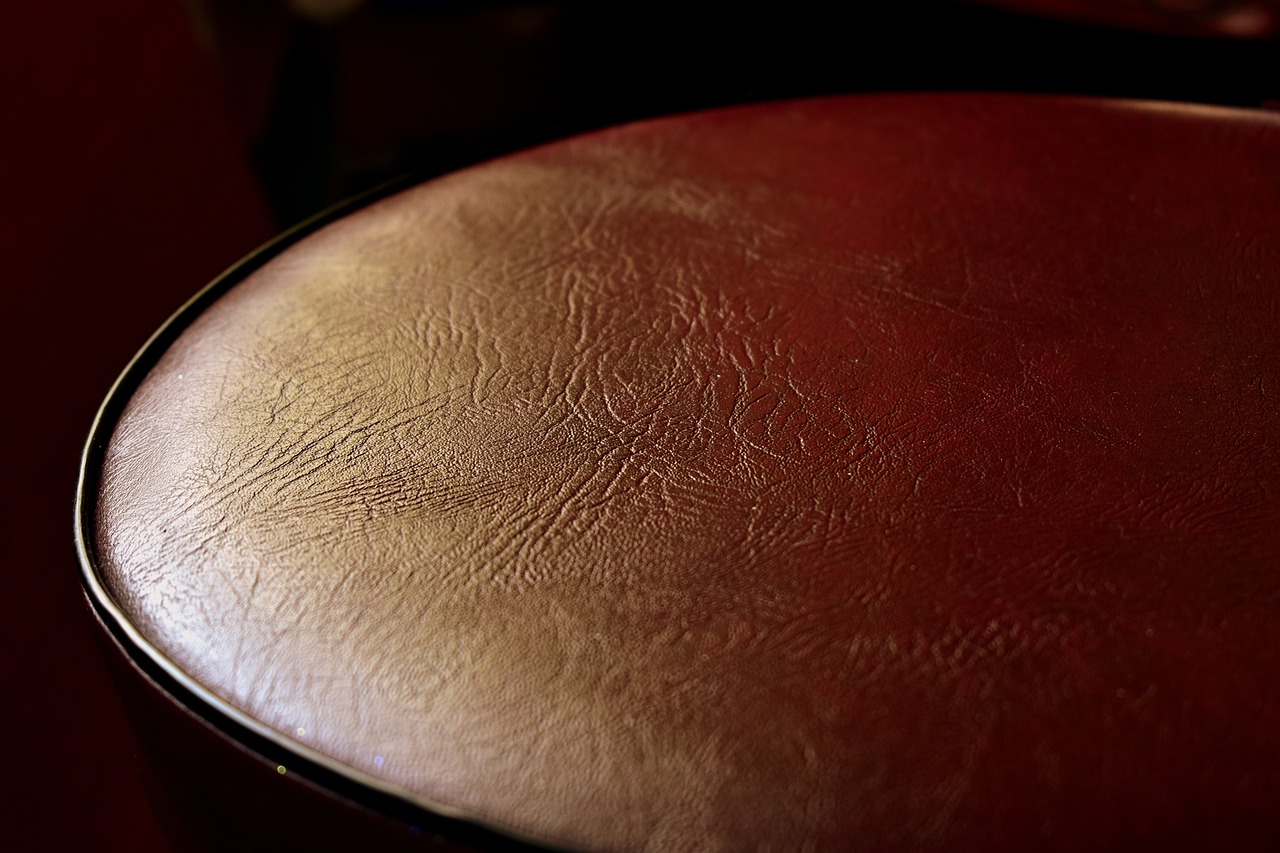
Styling Your Repurposed Furniture
Styling your repurposed furniture is where the magic truly happens. Once you’ve transformed that old piece into something new, it’s time to showcase it in a way that enhances its beauty and functionality. Think of your repurposed furniture as a blank canvas, waiting for your artistic touch. The goal is to create a space that not only looks good but also feels inviting and reflects your personal style.
To begin with, consider the color scheme of your room. Choose colors that complement the repurposed piece, ensuring it stands out without clashing with other elements. For instance, if you’ve painted a wooden chair in a vibrant hue, pair it with neutral tones in the surrounding decor. This contrast will draw the eye and highlight your work. Additionally, don't shy away from experimenting with various textures. Mixing materials like wood, metal, and fabric can create a visually appealing arrangement that adds depth to your space.
Next, think about arranging your decor around the repurposed furniture. If you’ve turned an old dresser into a chic TV stand, consider placing decorative items such as books, plants, or framed photos on top. This not only adds character but also makes the piece more functional. Remember, balance is key; avoid overcrowding the surface, as this can make the area feel cluttered. Instead, aim for a harmonious arrangement that allows each item to shine.
Another aspect to consider is lighting. The right lighting can dramatically change the perception of your repurposed furniture. If your piece has intricate details, consider using spotlights or table lamps to highlight those features. Soft, ambient lighting can create a cozy atmosphere, making your space feel warm and inviting. You might even think about placing your repurposed piece near a window where natural light can enhance its colors and textures during the day.
Finally, don't forget to share your style! Once you've styled your repurposed furniture, take photos and showcase your work on social media or DIY forums. Not only does this inspire others, but it also connects you with a community of fellow enthusiasts. Sharing your journey can motivate others to embark on their own repurposing adventures, fostering a culture of creativity and sustainability.
In summary, styling your repurposed furniture is all about creativity and personal expression. By considering color, arrangement, lighting, and sharing your work, you can turn a simple project into a stunning focal point in your home. So, roll up your sleeves, let your imagination run wild, and watch as your old furniture transforms into a stylish statement piece!
Q: How can I determine the best way to style my repurposed furniture?
A: Consider the overall theme of your room, the colors of your existing decor, and the functionality you want your repurposed piece to serve. Play around with different arrangements and accessories until you find a look that feels right.
Q: What types of decor items work best with repurposed furniture?
A: Items like plants, books, candles, and framed art can complement your repurposed furniture beautifully. Choose decor that reflects your personality and the style of the piece.
Q: Should I always match my repurposed furniture with existing decor?
A: Not necessarily! While cohesion is important, adding a contrasting piece can create visual interest. Don’t be afraid to mix styles and colors to express your unique taste.
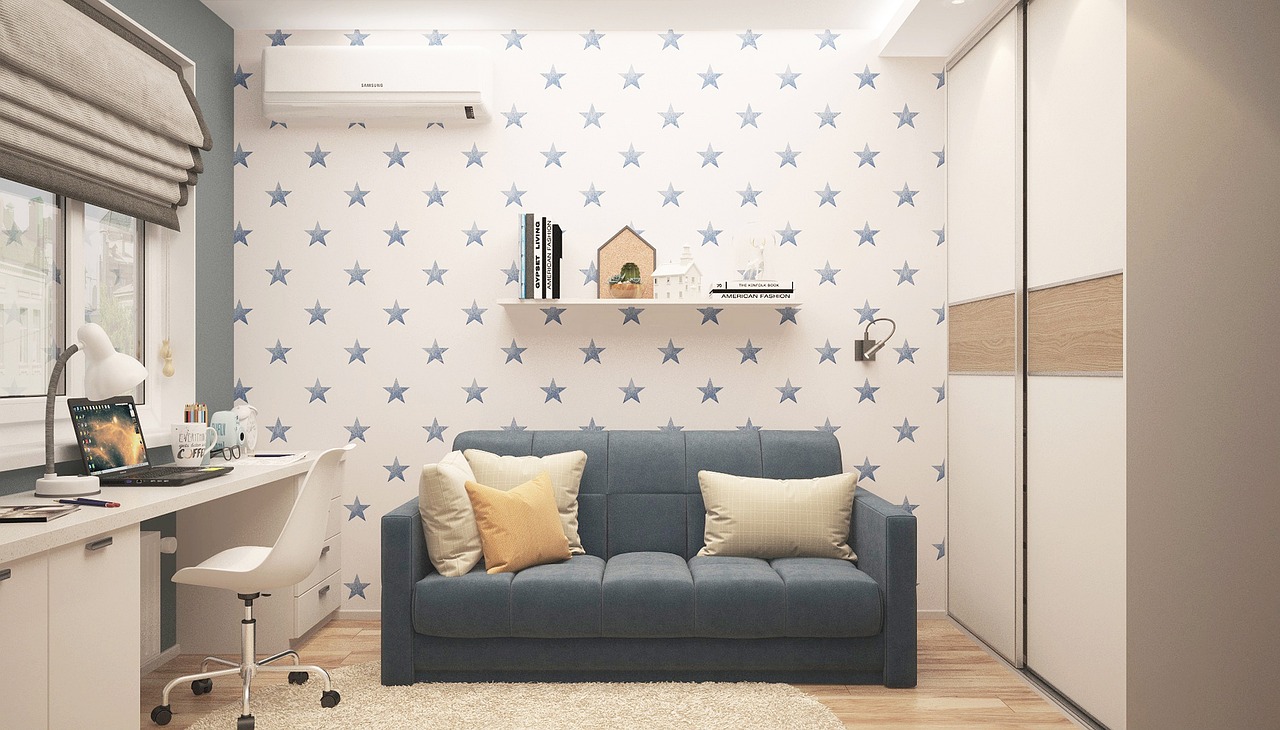
Sharing Your Work
Once you've poured your heart and soul into repurposing a piece of furniture, it's time to show it off! Sharing your work not only allows you to celebrate your creativity but also inspires others to embark on their own DIY journeys. Think of it as a way of joining a community where everyone appreciates the beauty of transformation and sustainability. So, how can you effectively share your repurposed furniture projects?
First, consider utilizing social media platforms. Instagram, Pinterest, and Facebook are fantastic for showcasing your work. You can post before-and-after photos that highlight the dramatic transformation your furniture has undergone. Don't forget to use relevant hashtags like #RepurposedFurniture, #DIYHomeDecor, and #UpcycledProjects to reach a broader audience. Engaging captions can also add a personal touch, inviting followers to connect with your story.
Moreover, blogging about your repurposing journey can be a fulfilling way to share detailed insights and tips. You can create a dedicated section on your blog for DIY projects, complete with step-by-step guides, materials used, and even challenges faced along the way. This not only helps others learn from your experiences but also establishes you as a knowledgeable resource in the DIY community.
Another excellent option is to join online forums or local community groups focused on DIY and home decor. Platforms like Reddit and Facebook Groups often have members eager to share their projects and seek advice. By posting your repurposed furniture, you can receive constructive feedback, tips, and even potential collaborations with like-minded individuals.
Lastly, consider hosting a small gathering or workshop in your home or community center where you can demonstrate your repurposing techniques. This hands-on approach not only showcases your skills but also encourages others to get involved. You can even create a fun atmosphere by providing refreshments and inviting friends and neighbors to bring their own projects to work on together.
In conclusion, sharing your repurposed furniture projects can be a rewarding experience that fosters community and creativity. Whether through social media, blogging, online forums, or workshops, there are countless ways to showcase your hard work and inspire others. Remember, your journey in repurposing furniture is not just about the final product; it's about the stories, lessons, and connections you make along the way!
- What is the best platform to share my repurposed furniture projects?
Platforms like Instagram and Pinterest are ideal for visual projects, while blogging allows for more detailed storytelling.
- How can I make my project posts more engaging?
Use before-and-after photos, write engaging captions, and ask questions to encourage interaction with your audience.
- Should I provide tutorials for my repurposing projects?
Absolutely! Tutorials can help others learn from your experience and establish you as an expert in the DIY community.
- Is it beneficial to join DIY community groups?
Yes, joining groups can provide support, feedback, and inspiration from fellow DIY enthusiasts.
Frequently Asked Questions
- What is repurposing furniture?
Repurposing furniture involves transforming old or unused pieces into something new and functional. It’s a creative way to breathe life into tired items while also promoting sustainability by reducing waste.
- How do I assess the condition of my old furniture?
To assess your old furniture, check for structural integrity by examining for any damages or weaknesses. Look for signs of wear and tear, such as scratches, dents, or loose joints, and evaluate its aesthetic potential to envision new uses.
- What tools do I need for repurposing furniture?
Basic tools for repurposing include screwdrivers, sanders, paint brushes, and measuring tape. Having these essentials will make your project smoother and more enjoyable.
- Can I repurpose furniture for any room in my home?
Absolutely! Different rooms offer unique opportunities for repurposing. Whether it’s turning a dresser into a TV stand for the living room or a ladder into a bookshelf for the bedroom, the possibilities are endless.
- What are some tips for successful repurposing?
Effective planning is key! Outline your project steps, set a realistic timeline, and gather inspiration to keep motivated. Also, remember to maintain safety by using protective gear and keeping your workspace clean.
- How can I present my repurposed furniture?
Styling your repurposed furniture enhances its appeal. Consider arranging decor thoughtfully, choosing complementary colors, and creating a cohesive look that showcases your creativity.
- Should I share my repurposing projects online?
Yes! Sharing your repurposing journey on social media can inspire others and connect you with a community of fellow DIY enthusiasts. It’s a great way to showcase your creativity and get feedback!













